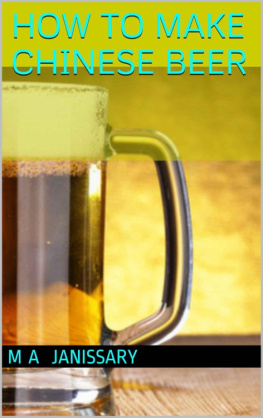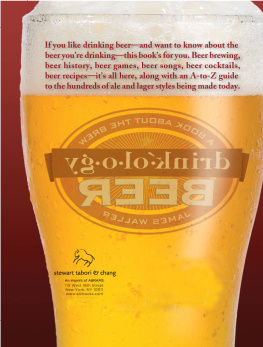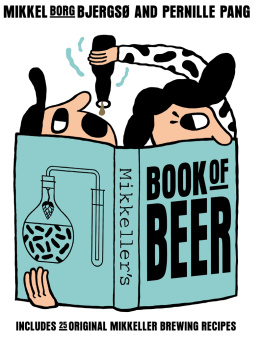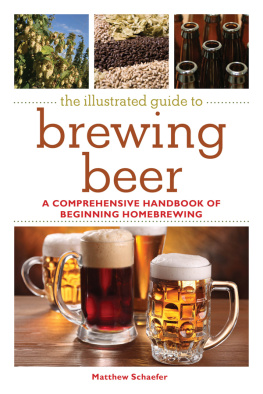Janissary - A Home Made Beer E-Book!
Here you can read online Janissary - A Home Made Beer E-Book! full text of the book (entire story) in english for free. Download pdf and epub, get meaning, cover and reviews about this ebook. year: 2015, publisher: M A Janissary . Author, genre: Children. Description of the work, (preface) as well as reviews are available. Best literature library LitArk.com created for fans of good reading and offers a wide selection of genres:
Romance novel
Science fiction
Adventure
Detective
Science
History
Home and family
Prose
Art
Politics
Computer
Non-fiction
Religion
Business
Children
Humor
Choose a favorite category and find really read worthwhile books. Enjoy immersion in the world of imagination, feel the emotions of the characters or learn something new for yourself, make an fascinating discovery.
A Home Made Beer E-Book!: summary, description and annotation
We offer to read an annotation, description, summary or preface (depends on what the author of the book "A Home Made Beer E-Book!" wrote himself). If you haven't found the necessary information about the book — write in the comments, we will try to find it.
A Home Made Beer E-Book! — read online for free the complete book (whole text) full work
Below is the text of the book, divided by pages. System saving the place of the last page read, allows you to conveniently read the book "A Home Made Beer E-Book!" online for free, without having to search again every time where you left off. Put a bookmark, and you can go to the page where you finished reading at any time.
Font size:
Interval:
Bookmark:

Is there too much Salt (Sodium) in our Diets?

TABLE OF CONTENT
ALL RIGHTS RESERVED..........4
NOTES TO THE READER...5
CHAPTER ONE - INTRODUCTION..6
CHAPTER TWO - MEANING AND HISTORY OF SALT ..7
CHAPTER THREE - TYPES OF SALT.....9
CHAPTER FOUR - WHY DO WE NEED SALT...12
CHAPTER FIVE - IS THERE TOO MUCH SALT IN OUR FOODS AND DIET14
CHAPTER SIX - EFFECTS OF SALT ON OUR BODY.15
CHAPTER SEVEN - DOES PROCESS FOODS CONTAIN TOO MUCH SALT17
CHAPTER EIGHT - HOW TO REDUCE SALT INTAKE..18
CONCLUSION - ...19

No part of this publication may be reproduced, stored in a retrieval system, or transmitted in any form or by any means, electronic, mechanical, photocopied, recorded, scanned, or otherwise, except as permitted under U.S copyright law, without the prior written permission of the author.

While the author of this book have made reasonable efforts to ensure the accuracy and timeliness of the information contained herein, the author and publisher assume no liability with respect to loss or damage caused, or alleged to be caused, by any reliance on any information contained herein and disclaim any and all warranties, expressed or implied, as to the accuracy or reliability of said information. The authors make no representations or warranties with respect to the accuracy or completeness of the contents of this work and specifically disclaim all warranties. The advice and strategies contained herein may not be suitable for every situation. It is the complete responsibility of the reader to ensure they are adhering to all local, regional and national laws. This publication is designed to provide accurate and authoritative information in regard to the subject matter covered.

INTRODUCTION
Many of us are cognizant that we shouldnt eat too much salt. To be specific, adults should shun eating over 6g (or around about a teaspoon of salt) a day.
The World Health Organization (WHO), conversely, estimates that the current global average consumption of salt is between 9g and 12g per day. This seems considerably higher than recommended.
But why is salt indeed so bad for us? What does it do to the body? In this eBook, youre going to discover answers to these questions.

MEANING AND HISTORY OF SALT
Salt is in fact sodium chloride and is an essential mineral for a healthy human body.
The fact that salt is made up of sodium chloride can really make food labels quite puzzling. This is because sometimes the labels will only give the amount of sodium in the food and not the amount of salt.
For every meal there is one thing people usually reach for before they even take a bite the salt shaker. Salt is one of the oldest spices used and is a key constituent to humans, animals, and plants.
Its flavor is distinctive and multipurpose; salt has been essential throughout time. Improving almost every dish, salt is added to breads, meats, fruits and vegetables to sauces and desserts.
History of Salt
Through the board, salt has played a key role in many cultures. Economically its been significant throughout the ages. Salt has been referenced and used in nearly all time periods and cultures from before recorded history. Its been used as money and for occupation in many early cultures. Some examples of the key roles include:
Salt was paid to soldiers in Rome.
The Dutch blocked Phillip II of Spains plans in the 16th century by impeding an Iberian salt works. Salts key role economically steered to Spains bankruptcy with the loss of this key merchandise during the blockade; thus averting a war.
Salt tax in France turned out to be a major contributing factor to the French revolution.
China issued, somewhere between 2700 BC to 4700 BC, a treatise regarding the medical uses of salt.
Not worth his salt stems from an ancient Greek exercise of trading salt for slaves.
British crown released the first patent to an American settler, giving Samuel Winslow distinct rights to produce salt using his own procedures.
Erie Canal, known as the ditch that salt built, was primarily used to transport salt.
The significance of salt has evoked numerous fairy tales and myths. The early Chinese had a folklore telling the discovery of salt. Egyptians used salt in the mummification practice. Some of the most primitive Egyptian writings have a explanation of how to extract salt. Salt mining and processing crosses many cultures from Egyptian, Chinese to French, Persian and Italian.
Salt has been a part of religion also. Some cultures ascribe magical powers to salt from safeguarding to cleansing. The bible and the Talmud have many references to salt.

TYPES OF SALT
When you reach for that salt shaker on the table or on the stove while cooking what type of salt are you getting? While salt is gained from two sources, salt deposits on land or from the sea, once harvested it is essentially processed in the same way, through the creation of brine and evaporation.
Salts, like so many other foods, have become trendy with the multitude of seas salts now available to the home cook. Is the trend overrated or are these salts really worth their weight in salt!
The main difference between salts is in their texture. Each salt has its own distinctive flavor, color, and texture. Experiment with different salt when cooking. Salt is like money! You get what you pay for. You can put the best ingredients into making your dish, but if you blow it on the wrong salt, the dish will not be as good.
The following are the basic types of salt:
TABLE SALT Table salt, the one found in most salt shakers, is mined from salt deposits and has most of the minerals removed. Most salt in the United States is sold with iodine added making it iodized salt. This salt is harvested by forcing water into a mine to create brine (salt/water mix). The brine is then evaporated leaving cubes of salt. The salt is refined from there to create varieties like: Pickling salt, Canning salt, Coarse salt, Gos sel, Pretzel salt, Rock salt, Popcorn salt, Iodized salt, Seasoned salt.
KOSHER SALT, KOSHERING SALT - also made from a brine but this brine is continually raked during the evaporation process.
Kosher salt is an additive-free coarse-grained salt. This salt was developed for the preparation of kosher meats in accordance with Jewish dietary laws. The salt itself is not kosher, but this is where the name comes from. The difference between table and Kosher salt is that during the evaporation process it is raked to give it a block-like structure which allows the salt to draw the blood out of meats. The raking makes Kosher salt coarser and flakier than table salt so it disperses more easily. This makes it lighter and less dense than table salt. It is also recommended to use Kosher salt for cocktail glasses for drinks like margaritas. Since it is a lighter salt, there is less after taste with it.
Next pageFont size:
Interval:
Bookmark:
Similar books «A Home Made Beer E-Book!»
Look at similar books to A Home Made Beer E-Book!. We have selected literature similar in name and meaning in the hope of providing readers with more options to find new, interesting, not yet read works.
Discussion, reviews of the book A Home Made Beer E-Book! and just readers' own opinions. Leave your comments, write what you think about the work, its meaning or the main characters. Specify what exactly you liked and what you didn't like, and why you think so.












